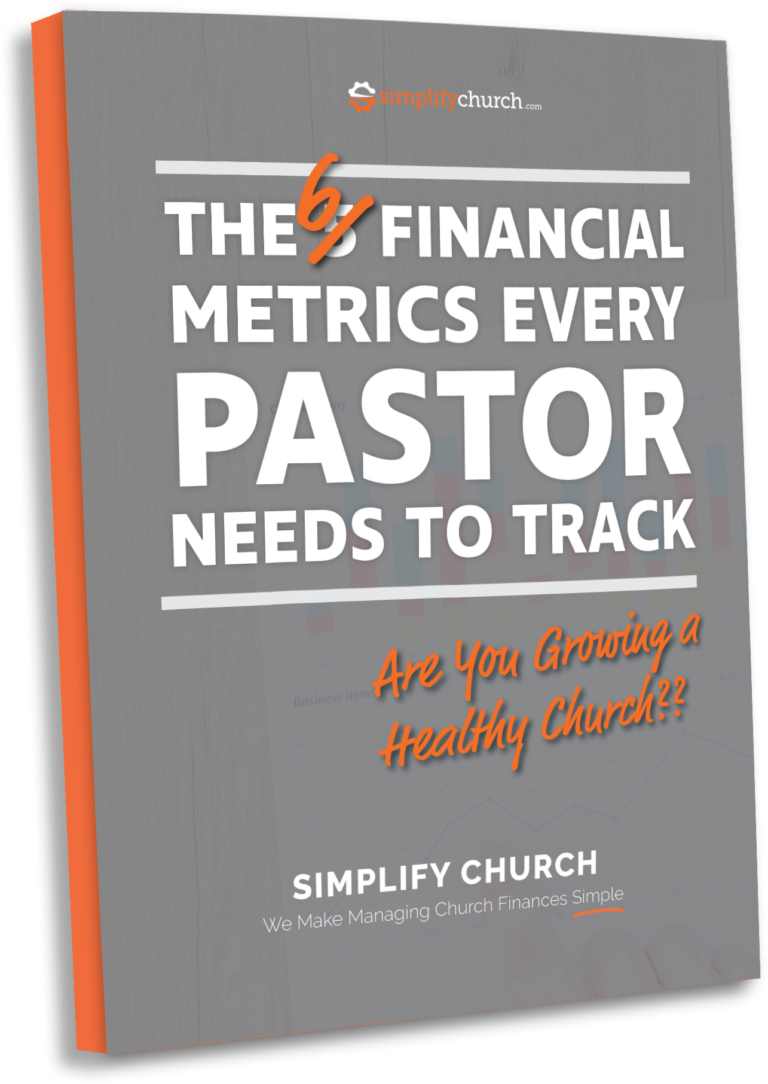There are times where I really enjoy “stirring the pot.” Usually with my in-laws in a joking way, for some reason I enjoy taking areas that people stress about and stoking the fire.
In church life there a few subjects that tend to get the fires burning as well and many of them revolve around areas of church we help with which is the finances.
As a pastor and leader of a business designed specifically to help churches in these hot button areas I for sure have heard a number of discussions when it comes to the pastor and the church finances. This topic for some reason is one of those that people will stake their stance and stand firm.
While there may be some that continue to disagree, let me detail some areas where pastor needs to be involved in the decision and analysis process.
Here are 4 financial areas that pastors need to be in charge (or at least know what’s going on)
1. Budget Planning Process for the year
The pastor needs to be a key leader in the budget planning process. We speak with too many pastors that don’t know their budget, can’t explain why certain items exist or don’t know why certain lines have certain amounts.
Now some will use the budget as an easy way to say no and that can be a useful tactic, however, far too many just don’t know the details.
Your church’s budget has a very specific prominence for your organization. While it is not set in stone, nor is it law, it’s definitely a guiding document when it comes to spending and ministry decisions. Give it too much weight and it will hinder your progress, not enough and you will be talking about how to shut down the ministry. There is a healthy balance in managing the budget. We’ve written a post here about why your church needs a budget and here on how to start that budget planning process.
There is no excuse for a pastor to be subordinate to a finance committee.
A healthy budget process is led by the Pastor and Elders, then up to the finance team to work within that guidance to allocate the amounts and make the budget work. The pastor has to have ownership of the budget and the process that went into creating it.
2. Final approval or at least input in hiring decisions
For most, if not all pastors, they are the figure head of their local church. Even if the constitution of the church says otherwise many people will assume the pastor is in charge. Unfortunately, this puts many pastors in a tough position where the assumption doesn’t match reality.
One area that many average church goers may assume is that the pastor is “chief of staff” or quite simply, The Boss. They will assume that pastor also has a say in personnel decisions.
Because this assumption exists, its important that pastor has a say in hiring decisions. The senior pastor needs to at least be in the process of interviewing and making a decision in hiring new personnel. Without pastor’s input, it puts him in a very difficult position when decisions need to be made or when problems arise within the staff.
3. Monthly Reports and Analysis
One of the biggest things we’ve learned over the years of having our business is that pastor’s eyes will glaze over when we start talking about financial reports.
The ones that don’t glaze over usually have two different reactions. There are some that believe that pastor has no business knowing about the finances of the church, then there is the others that are scared of going to jail because the church may be doing something wrong.
While I’m not going to get in the debate about whether or not pastors should know the finances (because I believe wholeheartedly that they should!), I will contend that pastors should at the very least have some idea of what is going on with the financial health of the church.
Pastor needs to know certain metrics and stats that relate to the current status of the church.
We’ll talk more in depth on giving in the next point so in this section we’ll just discuss the overall finances of the church to include overall income and expenses. Pastors need to be the leader when it comes to how the church is stewarding the finances of the church.
What does it mean to be a good steward?
When I started in ministry I am so thankful that I worked for a tightwad pastor (a term I use as endearingly as possible). I am a spender; money definitely burns a hole in my pocket. If I have cash, its very easy for me to swing by the gas station for a Scooby snack or swing through a drive thru.
Having people in my life to help hold me accountable or at least to look up to makes that a little better as I’ve matured.
As I was tasked with managing the budget in my first ministry assignment, the pastor challenged me to consider everything in worst case scenarios. We handled the budget as if we’d go weeks without any additional income. To do this, we took all total budget amounts and planned on spending at 80%.
While there were some things I could contend that were hindered in the ministry by doing this, for the most part it was very effective as we usually had surplus at the end of the year. We basically used the old Fable of being diligent to store up for winter so that we’d not starve.
As pastor, you should be keenly aware of how the money is being spent in your ministry. In the next section we’ll discuss how to watch the income, but just as important is to watch spending.
There is a very fine line between empowering your ministry leaders and micro-managing spending, but it’s important that you keep tabs on spending.
What does that look like?
For starters, when you’re planning the year and budget, express your vision for spending. Consider sharing the 80% rule with your ministry leaders. Secondly, give them an amount they can spend without additional authorization so they are empowered to make ministry decisions (this amount may be the 80%, hint, hint!) But keep an eye on that spending. Know what your ministry leaders are spending in an on-going basis and track that against the budget.
For our Simplify Church Bookkeeping Clients, this is a report we provide every month where we break down your income and expenses by ministry area, but also show you how those amounts are trending against your budget.
We know many pastors get nervous when we start talking about money and others just really don’t know where to start so we try to simplify things and give a very simple and easy to read analysis on a monthly basis of where your church stands.
4. Giving Trends
Another contentious subject for pastors and finances is keeping track of giving. If you want to start a big debate in a room full of pastors just ask the question about whether or not the pastor should know the giving information.
While we won’t debate that specifically here, there are ways that pastor can know what is going on without having to get into individual details.
Pastors need to be aware of the general giving in their church. They need to know the total for the week. They should also be aware of the amount of giving per unit and how that is trending over time. Both of these numbers can be evaluated without the pastor knowing any information on individual givers.
To analyze the weekly total, pastors should consider a few things. Once the total is counted, we need to look at the amount for this week which is pretty obvious. That amount should be then analyzed a number of ways. Let’s look at the giving over the past 10 weeks.
Why 10?
If we look at 10 weeks it allows us to see trends while removing months that might have 5 Sundays. That fifth Sunday can skew month by month analysis so taking the ten weeks into account gives a better measure. Ten week analysis also allows for seasonal trends to be taken into account. Depending on how those ten weeks are laid out, you may have a few high weeks mixed in with traditionally low weeks. Depending on big employers and their payroll schedule in your area that might also weigh in to how the giving trend looks.
For instance, our church is in a military community. Because we have a large contingent of military families in our church, we know which weeks of the month will be larger giving amounts than the others. You may also be in a community where many of your givers work for the same employer and experience the same result.
When analyzing the ten weeks, try to choose a consistent 10 weeks year over year. This will allow you to see trends as your church grows over time and provide a comparison to see how things are growing in your ministry.
Giving Per Unit
This measure takes into account an average gift amount of those people attending your church. You can analyze two numbers here but the best benchmark of giving health is to look at your total amount of giving divided by your attendance (minus kids) for that week.
If you want to get even more general, take this number of your total giving divided by your average attendance.
Keeping an eye on this number will give you a range to understand the giving health of your church. While there are no hard fast numbers here, some trends have been analyzed over time to determine some good averages. According to Tony Morgan and his post about “Measuing Church Health”, an average per capita giving number they’ve analyzed working with lots of churches is $41.
What does that mean?
Basically, a healthy church can expect to receive $41 for every person that attends their church on average.
Now, that measure will be dependent on several factors of your ministry and won’t hold true for everyone. For Example, if you’re reaching a lot of lost people that have never been around church before, that number for your church may be way lower since they may not be as aware as a young Christian about tithing.
However, you can use that number as a gauge to track over time. A good practice is to look at that number each week and month to see how your giving is trending. As total income changes this number will ebb and flow accordingly.
For pastors keeping an eye on giving trends, they will be in a position to understand what is happening in their church and possibly proactively catch upcoming changes before they happen.




